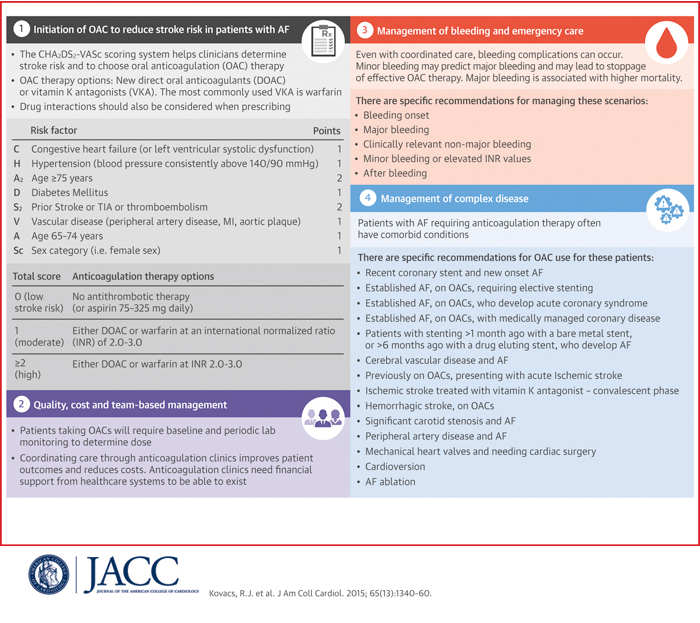State-of-the-Art Review Explores Management of Anticoagulation in AFib Patients
A state-of-the-art review published March 30 in the Journal of the American College of Cardiology discusses the clinical issues regarding oral anticoagulant alternatives to warfarin in patients with non-valvular atrial fibrillation (AFib), including the initiation and interruption of anticoagulant therapy; the quality, cost and team-based management of anticoagulation; management of bleeding and emergency care; and complex disease states and special populations. The review stems from the ACC’s Anticoagulation Initiative roundtable discussion that took place in the fall of 2013 and included representatives of specialty societies, the U.S. Food and Drug Administration and patient advocates.
In terms of initiation and interruption of anticoagulant therapy, the review notes that “short-term interruption of oral anticoagulation therapy is safe for most low-risk invasive procedures” [and that] “management of oral anticoagulation therapy should be individualized for patients at higher thromboembolic risk who are undergoing high-risk procedures.”
Addressing the quality, cost and team-based management of anticoagulation care for patients with AFib, the authors point out that “patients taking oral anticoagulation therapy will require baseline and periodic lab monitoring to determine dose,” and that “coordinating care through anticoagulation clinics improves patient outcomes and reduces costs.”
Since minor bleeding may predict major bleeding and may lead to discontinuation of effective anticoagulation therapy, the authors underscore the importance of preventing and effectively managing bleeding episodes. They provide definitions of bleeding, recommendations on the management of major bleeding, management of clinically-relevant non-major bleeding; management of minor bleeding or elevated INR values; and management after bleeding.
The authors also provided recommendations for special populations including patients with a recent coronary stent and new-onset AFib, patients with both AFib and peripheral artery disease, and more.
The review also brings several unanswered questions to the forefront, including the need for performance metrics that indicate best practice; tools for shared decision making; more data in the frail and elderly; and more. The authors ultimately conclude that moving forward, “there needs to be continued dialogue about the integration of these drugs into practice.”
Keywords: Aged, Anticoagulants, Atrial Fibrillation, Emergency Medical Services, Emergency Treatment, Hemorrhage, International Normalized Ratio, Peripheral Arterial Disease, Pharmaceutical Preparations, Stents, United States Food and Drug Administration, Warfarin
< Back to Listings

